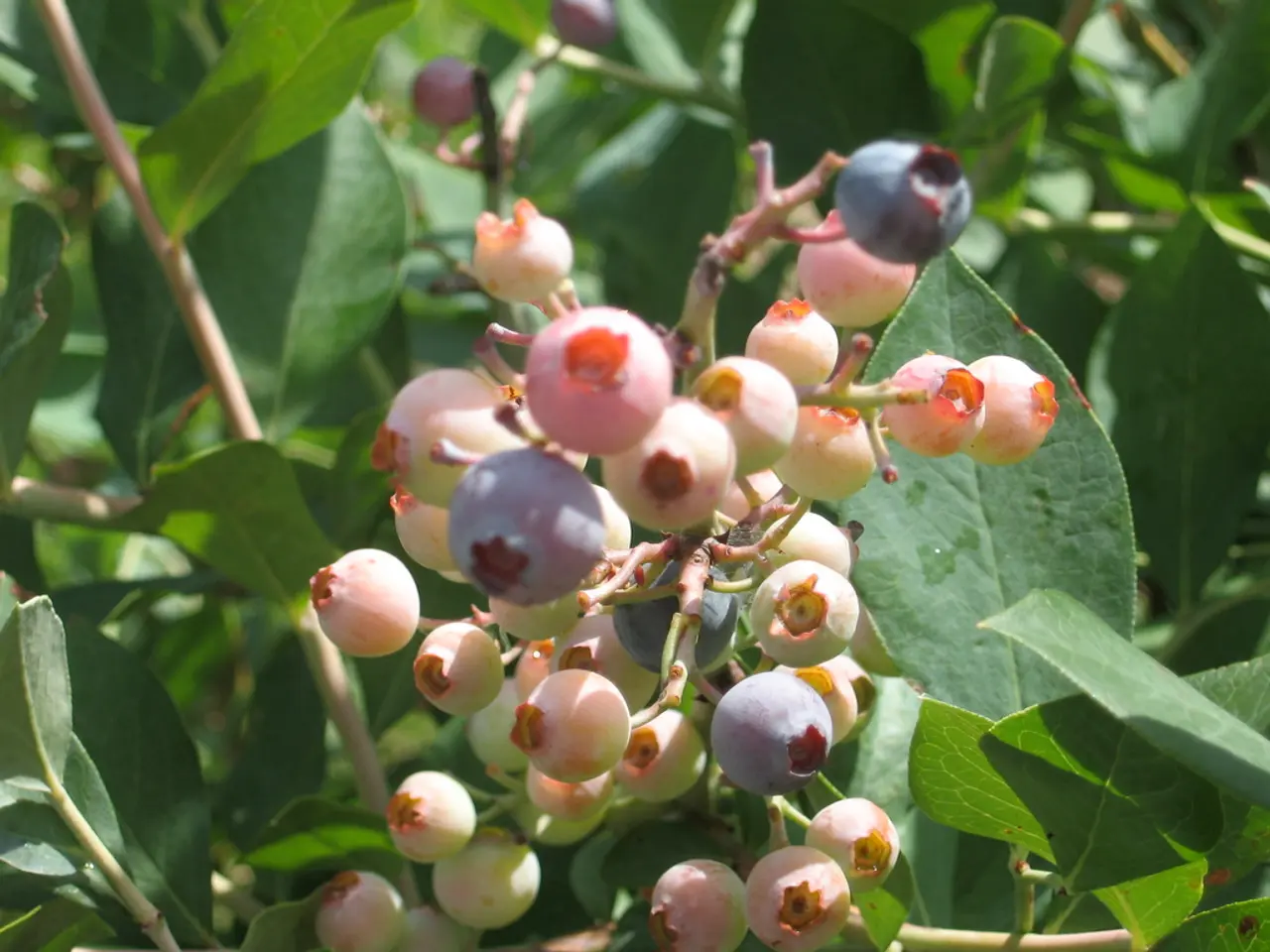Harvest edible plants in June
Growing Sweetcorn and Controlling Blackfly on Broad Beans
As the summer months approach, it's time to start thinking about planting sweetcorn and managing pests on broad beans. Here's a guide to help you get started.
Sweetcorn Growing Practices
Sweetcorn thrives in full sun and fertile, well-drained soil with a pH of 6.0 to 6.5. Plant fresh seeds about 1 inch deep (up to 2 inches in sandy soil), spaced 8 to 12 inches apart in rows 2.5 to 3 feet apart or in hills spaced similarly. For optimal growth, sow two or three seeds in each spot and thin out the seedlings once they've germinated.
Sweetcorn needs high nitrogen and moderate phosphorus and potassium. Apply 2–3 pounds of a balanced fertilizer (e.g., 10-10-10) per 100 square feet before planting, then side-dress with 1–2 pounds per 100-foot row when plants are 5 to 10 inches tall. Planting in blocks, rather than single rows, promotes wind pollination for better kernel set.
Watering Vegetables
Courgettes, cucumbers, tomatoes, celeriac, celery, lettuce, spinach, and leaves near to harvest require more frequent watering. Watering effectively involves using a ground level method to seep water into the soil around the plants. A thick mulch cover of compost between vegetables helps conserve water and prevent evaporation.
Controlling Blackfly on Broad Beans
Blackfly, also known as aphids, are a common pest on broad beans. They feed on the tips of the plants and can cause ants to gather. To manage blackfly, inspect your plants regularly to catch infestations early. Use insecticidal soaps or neem oil sprays, which are effective and safer for edibles. Encourage natural predators, such as ladybirds (ladybugs), lacewings, and parasitic wasps.
Avoid excessive nitrogen fertilizer, as it promotes tender growth favored by aphids. Removing heavily infested plant parts or blasting blackfly off broad bean plants with a jet of water can help control them. However, cutting off the tips of broad bean plants can reduce the blackfly population, but they will recolonize and need repeated treatment.
For more specific, up-to-date methods for blackfly control on broad beans, consulting local horticultural extensions or integrated pest management resources would be advisable, as these pests can vary in resistance patterns and environmental impact considerations.
In summary, growing sweetcorn and managing blackfly on broad beans involves careful planting, watering, and pest control practices. By following these guidelines, you can enjoy a bountiful harvest of sweetcorn and healthy broad beans this summer.
Maintaining a home-and-garden lifestyle, consider expanding your gardening efforts to include sweetcorn, while also addressing blackfly infestations on broad beans. With sweetcorn, establish a favorable environment by planting seeds in full sun, well-drained soil, and following appropriate fertilization and spacing methods. Additionally, watch out for blackfly on broad beans and implement strategies such as regular inspections, insecticidal soaps, neem oil, promoting natural predators, and appropriate fertilization measures to curb their impact.




